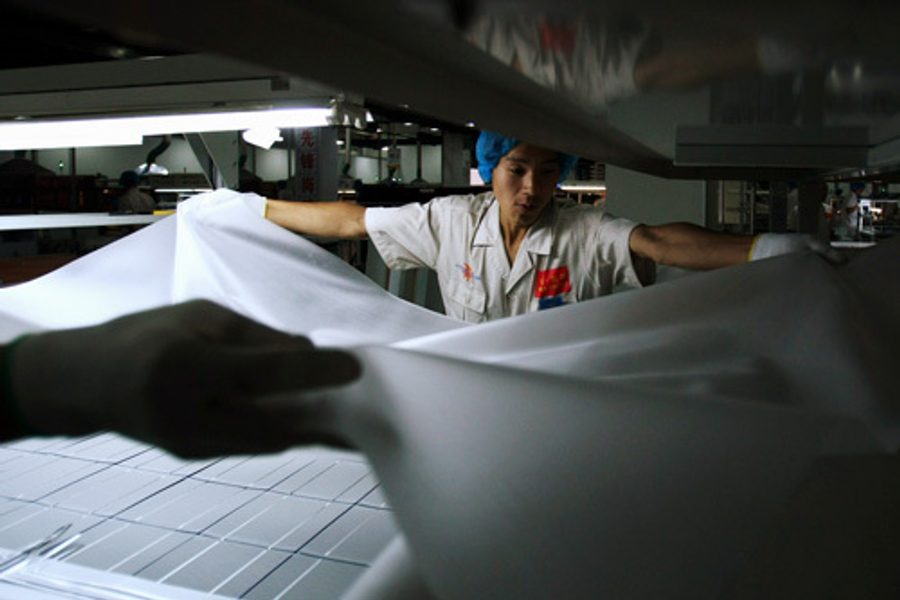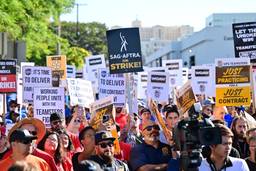
China has become known as the world’s factory, or more properly, the world’s sweatshop.
It has epitomized corporate globalization at its worst, a nightmarish model of 21st century slavery, combining cutting-edge technology with razor-edged brutality. Perversely, these features have made China a stunningly profitable employer paradise.
While the country has gained a nasty reputation for its treatment of workers and the environment, that is precisely what makes it so attractive to foreign corporations. Fully 60 percent of “Chinese” exports come from plants operated by foreign corporations. Ford, GE and GM are among the many firms that have abandoned U.S. workers and communities for the Chinese labor market.
Challenge to sweatshop system
But the Chinese sweatshop system is being profoundly shaken by a nascent worker rebellion, fueled by a tight labor market that gives workers more leverage. However, it remains to be seen how much revolt the Chinese elite is willing to tolerate, or if the workers’ struggles will continue to escalate beyond what Chinese authorities find acceptable.
Up until very recently, Chinese authorities &mdash including state-run unions &mdash have simply suppressed strikes and jailed leaders, while clamping down on the press to make sure that the worker-rights virus does not spread. This was the ideal “business climate” for U.S. and other foreign employers, and they kept up a gusher of investment flowing into China.
But on May 24, highly-skilled workers at a crucial Honda transmission plant in Foshan staged a strike that authorities tolerated, and the well-publicized struggle won spectacular gains for the workers. The New York Times reported June 8,
Last week the Japanese automaker Honda said it had agreed to give about 1,900 workers at one of its plants in southern China raises of 24 to 32 percent, in hopes of ending a two-week strike, according to people briefed on the agreement. The new monthly average would be about $300, not counting overtime.
An epidemic of eight suicides among workers at Taiwanese-owned Foxconn, which employs nearly 400,000 workers in China making electronic components for Apple, Dell and iBooks, forced Foxconn to make substantial raises, improve its harsh conditions and shorten its exhausting work weeks. Notes UCLA Prof. C. Cindy Fan, author of China on the Move:
Honda and Foxconn have both agreed to raise wages by large margins. Like dominoes, workers in other factories, including those in an electronic factory in Shenzhen and a textile factory in Hubei, have followed suit and gone on strike.
The tighter labor market has made Chinese workers much less willing to accept the glaring inequalities that are the essence of the Chinese “boom” which has benefitted only a tiny minority. Despite all the Western media hype, China still ranks a sickly 92nd internationally on key UN measures of social health. As MIT Prof.Yasheng Huang, author of Capitalism with Chinese Characteristics, writes,
…in the last 20 years China rose to be the factory of the world and tens of millions of jobs were created in the export sector. But job creation is one thing; who gains from it is another. The labor income share of Chinese G.D.P. declined from 57 percent in 1983 to only 37 percent in 2005. (The ratio has stayed at that level since then.)
Coupled with this highly visible polarization of wealth and income have been miserable working and living conditions for workers, who make only subsistence wages averaging about 75 cents an hour.
On the job, workers often face brutal regimentation where talking is sometimes prohibited and bathroom breaks are intensely monitored. Many workers live crammed in dormitories near the factories to facilitate a work schedule that may run 14 hours a day for six or seven days a week.
New level of struggle
Outrage over these conditions spawned thousands of spontaneous protests which were easily put down or bought off. However, the recent struggles show a new level of democratic organization and strategic sophistication.
Chinese leaders have recognized the potential threat of rising ferment among workers – which U.S. and other foreign corporations have been unwilling to defuse &mdash and while setting their sights on a higher stage of economic development.
Prof. Fan describes these shifts in strategy among China’s rulers,
A sweatshop formula for success may be nearing the end of its life span, as China actively seeks to move its economic structure up the technology/skill ladder.
From the governance point of view, President Hu Jintao and Prime Minister Wen Jiabao are more ready than previous leaders to express sympathy for the workers and the poor, an attitude that encourages efforts toward new labor laws and more open media reporting of societal problems such as strikes.
But there are very distinct limits to the “sympathy” granted to worker resistance in China. In an ominous sign for the future, more recent strikes have been greeted by the kind of harsh government response to which Chinese workers have long become accustomed.
Strikebreakers brought in
When workers in Zhongsan went out on strike at a Honda Lock plant, the strikers &mdash who were less technically-skilled than the transmission strikers who inspired them– were confronted with the corporation and government bringing in strikebreakers. The combination of being replaced by scabs, along with small raises in pay and their living allowances, succeeded in breaking the strike..
Nonetheless, The New York Times reported, the task of strike-breaking was a bit tricky for China’s elite:
The Chinese government’s willingness to help a Japanese company replace Chinese workers with strike breakers could stir anger in China if it became widely known. Some hostility toward Japan still simmers in China as a result of atrocities during World War II.
The strike here has particularly touchy historical overtones. Zhongshan is famous across China as the hometown of Sun Yat-sen, who overthrew imperial rule in China in 1911 and had a socialist-influenced vision of China’s future in which workers would play a valued role.
Clearly, Chinese authorities are now realizing that workers must be granted more concessions and perhaps moving away from a pure sweatshop model. But China’s rulers still clearly intend to keep workers as a subordinate class in a society that will continue to enthrone transnational corporations.








